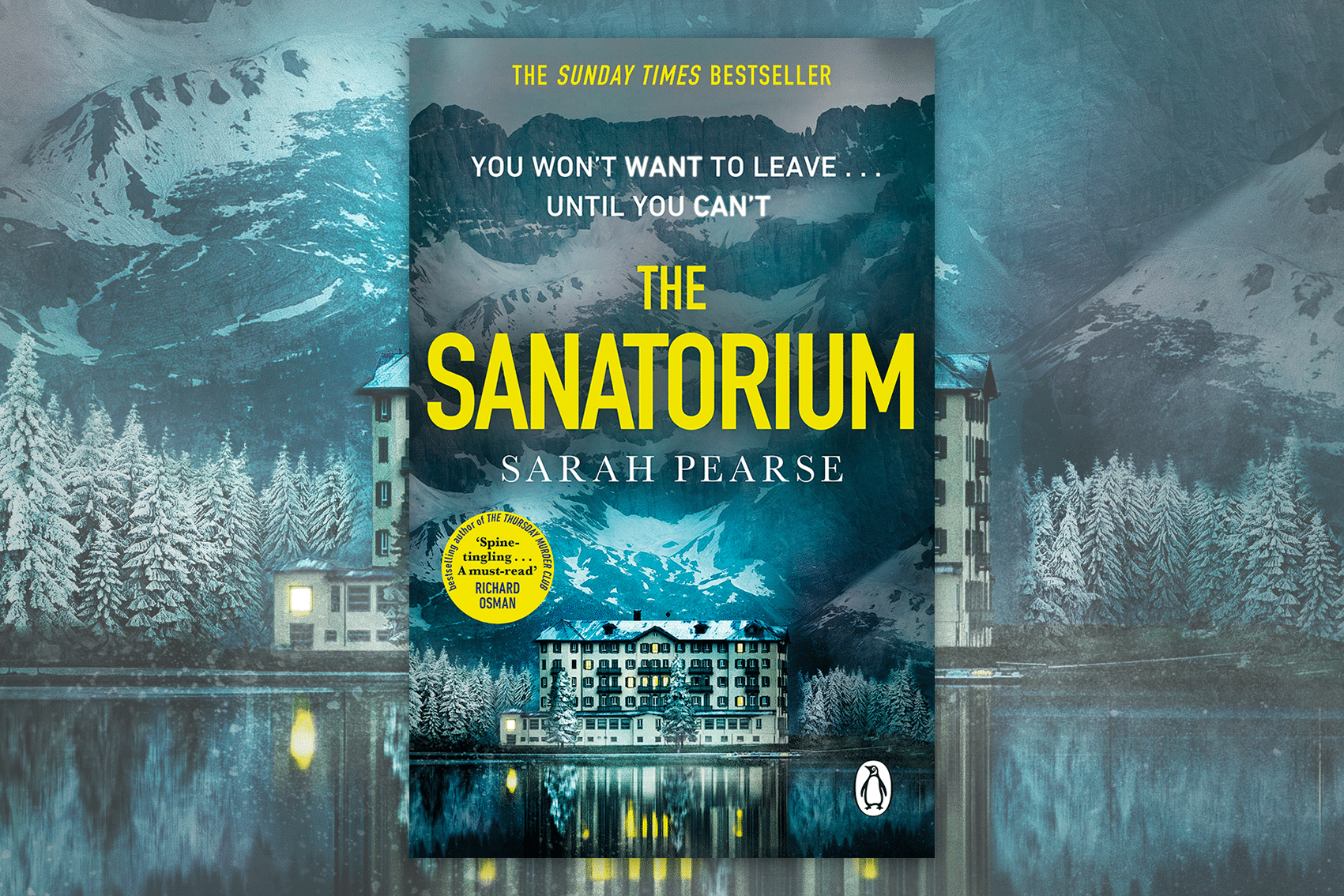The Sanatorium by Sarah Pearse is a novel that defies simple classification. It presents itself as a thriller, but beneath its taut pacing and atmospheric tension, there lies a psychological labyrinth where past traumas collide with present horrors. Published in 2021, the novel became an immediate success, tapping into the contemporary fascination with locked-room mysteries while intertwining elements of the gothic tradition, social commentary, and psychological introspection.
At its core, The Sanatorium is an exploration of the human psyche, a probing of the darkest recesses of fear, isolation, and guilt. It is set in Le Sommet, a former tuberculosis sanatorium turned luxury hotel, perched ominously amidst the glacial peaks of the Swiss Alps. The setting itself is a masterstroke, as Pearse transforms the raw, natural majesty of the mountains into an ominous symbol of seclusion and danger. This landscape mirrors the internal landscape of the novel’s protagonist, Elin Warner, a detective haunted by personal tragedy, and the novel’s exploration of psychological landscapes is as vital as the physical terrain it occupies.
The Architecture of Fear
One of the most striking aspects of The Sanatorium is how Pearse uses architecture as a metaphor for the psychological entrapment of her characters. Le Sommet, with its history as a sanatorium, is more than just a setting—it is a character in its own right. The building’s transformation from a site of healing to one of luxury belies an undercurrent of menace that seeps through the novel. Pearse’s careful attention to the structure’s brutalist design, with its stark concrete facades and oppressive geometry, serves to create a space that feels both modern and timeless, a purgatorial place where past horrors refuse to stay buried.
This architectural entrapment reflects the psychological states of the characters, particularly Elin. The cold, clinical nature of the sanatorium evokes the emotional detachment Elin has developed as a result of her unresolved trauma. The snow-covered landscape, isolating and impassable, mirrors Elin’s internal desolation, while the hotel’s labyrinthine corridors become a manifestation of her mind’s spiraling confusion and paranoia. Pearse cleverly weaves the building’s history into the present narrative, blurring the lines between the hotel’s dark past and the ominous events unfolding within its walls.

Elin Warner: A Study in Vulnerability
At the heart of the novel is Elin, a detective who is anything but the archetype of the hard-boiled investigator. Her vulnerabilities are laid bare from the outset, and it is this fragility that makes her a compelling and richly textured character. Pearse does not present Elin as a woman with a stoic exterior masking internal chaos; rather, Elin is defined by her psychological wounds, which are visible in her every interaction and decision. This is a profound subversion of the genre’s usual protagonist—often hardened, emotionally distant figures who shield themselves with rationality and control.
Elin is not in control. She is plagued by the death of her brother, Sam, and the long-standing belief that his death may not have been an accident. This personal anguish collides with the professional pressure she faces in trying to unravel the mystery at Le Sommet. Her struggles with anxiety and self-doubt complicate her ability to trust her own instincts, a trait that renders her deeply relatable but also leaves the reader questioning the reliability of her perspective. Pearse uses this ambiguity to her advantage, crafting a narrative that plays as much with the mind of the reader as it does with the mystery at hand.
Elin’s characterization reflects a broader thematic concern in The Sanatorium: the nature of trauma and its enduring, often corrosive, effect on identity. Her psychological scars are not mere plot devices but rather windows into the ways in which trauma distorts one’s sense of self and reality. As Elin navigates the increasingly dangerous environment, she is forced to confront not only the external threats posed by a potential killer but also the internal demons that have long held her captive.
The Gothic Underpinnings
While The Sanatorium is marketed as a contemporary thriller, it borrows liberally from the gothic tradition, particularly in its evocation of dread and its atmospheric intensity. Gothic literature, from Mary Shelley’s Frankenstein to the works of Edgar Allan Poe, has long explored the relationship between place and psyche, and Pearse’s novel follows in this tradition. The novel’s remote setting, the history of the sanatorium, and the gradual unraveling of hidden secrets all contribute to an overwhelming sense of claustrophobic terror.
Le Sommet’s role as a former sanatorium carries with it the weight of historical suffering. The sanatorium was once a place where people came to recover from tuberculosis, an illness that itself evokes associations with decay, confinement, and inevitable death. This history bleeds into the present-day narrative, and Pearse plays with the notion that places can retain the psychic residue of their past. The hotel, despite its luxurious renovation, still harbors the ghosts of its former life, and this tension between past and present is a crucial source of the novel’s tension.
Furthermore, Pearse’s handling of atmosphere—the cold, biting wind, the suffocating snowstorms, the eerie silence of the mountains—draws the reader into a gothic sensibility, where the natural world is as much an antagonist as the hidden killer. The oppressive environment heightens the characters’ sense of isolation and helplessness, evoking the classic gothic theme of nature as an overwhelming and indifferent force, one that reflects the characters’ inner turmoil.

The Thriller as a Reflection of Societal Malaise
Beyond its psychological and atmospheric complexity, The Sanatorium also functions as a subtle critique of modernity and the anxieties that define contemporary society. The very concept of turning a former sanatorium into a luxury hotel speaks to the novel’s exploration of wealth, power, and the ways in which society attempts to mask its most uncomfortable truths beneath a veneer of affluence and sophistication. The guests at Le Sommet, wealthy and privileged, are disconnected from the building’s grim past, just as they are from the realities of the outside world. Their sense of entitlement and insulation becomes a symbol of the broader societal tendency to bury unpleasant history in the name of progress and comfort.
This critique of privilege and denial runs parallel to the novel’s exploration of institutional corruption and the exploitation of vulnerable individuals. As the mystery unfolds, it becomes clear that the crimes at Le Sommet are not isolated incidents but part of a deeper, systemic rot. Pearse subtly weaves in themes of corporate greed and the dark side of the wellness industry, where the pursuit of profit often comes at the expense of ethical responsibility.

Conclusion: The Sanatorium as a Multifaceted Exploration
In The Sanatorium, Sarah Pearse has crafted a novel that is as much about atmosphere and psychological depth as it is about unraveling a central mystery. The interplay between the physical and psychological landscapes is masterful, and the novel’s gothic overtones add a layer of existential dread that elevates it beyond a conventional thriller. The novel ultimately becomes a meditation on the inescapability of the past, the fragility of the human mind, and the ways in which trauma can shape, distort, and define us.
Pearse’s ability to blend genres—merging the thriller with psychological horror, gothic fiction, and social commentary—speaks to her skill as a storyteller. The Sanatorium is more than just a page-turner; it is a work that asks probing questions about the nature of fear, the reliability of perception, and the dangers of burying the past. It is a novel that lingers long after the final page, its psychological resonance as chilling as the snow-covered mountains that loom over its plot.









